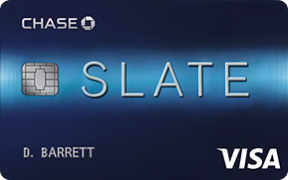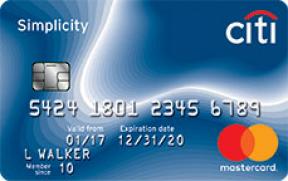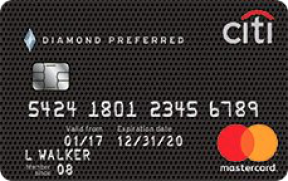The purpose of a balance transfer credit card
A balance transfer credit card is differentiated from other credit cards by a couple prominent features. It has a promotional period with zero interest rate. More importantly, it allows you to transfer balances from other credit cards. The intended use is to move an expensive debt (or several) to where there is no interest rate and pay it off before the promotional period ends. Naturally, there are a number of drawbacks and some variance across different cards. We recommend taking a look at our guide below and learn how to spot a good deal.
The features of a balance transfer credit card
A balance transfer credit card has a dozen of noteworthy characteristics. About half of them are identical across all cards. The other half provides enough variance to justify doing some research before making a final decision.
![]()
Transfer fee
When the balance is moved from one card to another, the accepting bank charges a fee. The fee is calculated as a percentage of the transferred balance. Most banks have it set at 3%, but it could be as high as 5%. When the balance transfer is used right (e.g. paid off within the promotional period), that fee is your only cost and is easily offset by the absence of interest. Nevertheless, it wouldn’t hurt to have a look around in case there is a better deal – sometimes there is a temporary offer of no-fee balance transfers.
Another important note on a transfer fee is the way it’s handled. You don’t have to pay it upfront. It is instead added to the transferred balance and becomes a part of your new balance. Furthermore, the fee should fit within your new credit limit. e.g. if you have a credit limit of $10,000 and fee of 5%, you can only transfer $9,500 leaving room for a $500 fee.
Promotional interest rate (APR)
During the promotional period, balance transfer cards have two types of interest rates. One is applied to the balance transferred and another is applied to the purchases made with the card. Normally, both rates are 0%, but sometimes the purchase rate might be higher or have a shorter duration than the balance rate.
It shouldn’t be of importance, since we do not recommend using transfer cards to make new purchases. However, if you are planning to, make sure to check the terms for both rates.
Promotional period duration
Most cards have a promotional period of 15 months, but the range is between 14 and 21 months. Actually, the full range is up to 36 months, but the cards with very long promotional periods usually have a promotional interest rate of 5% or more and a number of other conditions that make them unappealing. After the promotional period is over, you will be charged a regular interest rate on whatever is left of your balance and on the new purchases.![]()
Rewards
Here, again, the split is 50/50. Half the cards come with rewards and the other half comes without rewards. Most people don’t make any purchases and do not keep the card after the balance is paid off. For them, the rewards don’t matter. But if you are planning to use the card actively, then you might want to look into reward options. Most commonly, you’d have either cash back or points at a low rate and some kind of conditional introductory bonus.
Regular interest rate
A regular interest rate is what you are going to be charged once the promotional period is over. You can find it within the terms and conditions, and it is expressed as a range. The usual range rests somewhere between 12% and 25%. Your exact interest rate is determined based on your creditworthiness but tends to be a little higher than it would have been on a non-transfer card. That’s why transfer cards are not recommended for revolving credit.
Penalties
There is a late fee and a penalty interest rate, both of which you should be familiar with. The penalty interest rate on a balance transfer credit card is a little different though. It could be applied during the promotional period, canceling out the promotional APR. The good news is some cards don’t have a penalty rate altogether, so it’s worth researching that aspect in advance.
![]()
Credit requirements
Transfer cards are a form of debt relief. Ironically, they are only available to people with good credit and a favorable debt-to-income ratio. If you really need a balance transfer to help you with your debt, then you are probably not the right candidate. Even though there are some cards, like Chase Slate®, that go easy on the credit score requirements, still you’d have to at least fit in the “average” bracket. In short, it is not a likely instrument for bad debt.
Testimonials
Balance transfer credit cards do not always deliver as advertised. One way to learn about possible pitfalls is to go through card reviews, and see whether certain complaints are repeated more often than others. A common complaint is about credit and transfer limits. Transfer limit is capped at $15,000 for all transfer cards. The actual amount you are approved for may be much lower. It is not uncommon for someone with a credit score of 750+ to be approved for a balance transfer of a couple thousand. Although we suspect that in many cases debt-to-income ratio may be to blame, we still recommend skimming the review section to set reasonable expectations before your application.

A word of caution on balance transfer cards
Balance transfer cards are amazing instruments when used right. However, they do create new opportunities for making poor financial choices. Let’s review what those poor choices are.
Accumulating new debt
![]() When you open a new card, you increase your overall credit limit. And for some people, debt is like gas – it fills all the room it has. It is all too common to open a transfer card and unload the debt from some of the old cards and then, experiencing a fake sense of relief, charge those old ones up again. This is one of those temptations you have to be ready to withstand when doing a balance transfer.
When you open a new card, you increase your overall credit limit. And for some people, debt is like gas – it fills all the room it has. It is all too common to open a transfer card and unload the debt from some of the old cards and then, experiencing a fake sense of relief, charge those old ones up again. This is one of those temptations you have to be ready to withstand when doing a balance transfer.
Failing to make the payments
![]() Regular interest rates on balance transfer cards tend to be above what you get on other credit instruments. If you are not paying the debt aggressively or at all, you are going to face those interest rates either after the promotional period ends or even sooner, in the form of a penalty interest rate. Yes, you’d postpone the payments, but in the end, you’d only make your debt more expensive. And the option of making another balance transfer is likely to be closed as no bank will offer a balance transfer to someone who has just failed to use one properly.
Regular interest rates on balance transfer cards tend to be above what you get on other credit instruments. If you are not paying the debt aggressively or at all, you are going to face those interest rates either after the promotional period ends or even sooner, in the form of a penalty interest rate. Yes, you’d postpone the payments, but in the end, you’d only make your debt more expensive. And the option of making another balance transfer is likely to be closed as no bank will offer a balance transfer to someone who has just failed to use one properly.
Hurting your credit score
![]() The most immediate damage is going to be from a hard pull when applying for a balance transfer credit card. Your score is going to drop about 10 points but recover within a couple months. A less obvious risk comes from what you are going to do with your old cards that are now paid off. Keeping them is going to tempt you to create new debt, but closing them will shorten your average age of accounts and increase your credit utilization, both of which will do long-term damage to your score. Not as much damage as creating new debt, so it’s up to you to choose the right option.
The most immediate damage is going to be from a hard pull when applying for a balance transfer credit card. Your score is going to drop about 10 points but recover within a couple months. A less obvious risk comes from what you are going to do with your old cards that are now paid off. Keeping them is going to tempt you to create new debt, but closing them will shorten your average age of accounts and increase your credit utilization, both of which will do long-term damage to your score. Not as much damage as creating new debt, so it’s up to you to choose the right option.

Our top picks for balance transfer cards
Among our favorite features are low fees and absent penalties. We also tend to look at products available nationwide, which, to be honest, also offer the best terms. If, however, you are a former or a current client at all of those banks, try researching some local offers – there might be some hidden gems.
Best overall: Chase Slate®
| Transfer fee | 5%, free within first 60 days |
| Promo duration | 15 months |
| Regular APR | 16.99–25.74% |
| Late fees | up to $37 |
| Penalty APR | no |
| Credit requirements | average/good |
| Rewards | no |
The good
Chase Slate® has two very attractive features that are very rare among transfer cards. First, it is available to people with average credit, which is a ray of hope for someone in an actual need of debt relief. Although, we suspect that your debt-to-income ratio will still play a significant part. Second, the card offers a free of charge balance transfer, if requested within the first 60 days of account activation. That’s a very sweet deal.
The bad
Promotional period duration is 15 months, which is average for transfer cards, but falls short of 18- and 21-month offers we’ve managed to find. There are also no rewards of any kind, even though about half the cards offer at least some. Regular APR is also among the highest.
Best overall runner-up: Citi Simplicity®
| Transfer fee | 5% |
| Promo duration | 21 months |
| Regular APR | 15.99% - 25.99% |
| Late fees | no |
| Penalty APR | no |
| Credit requirements | good/excellent |
| Rewards | no |
The good
Citi Simplicity® is often quoted to be the best transfer card, and the reason is that it has no late fees and no penalty APR. Both are nice features but not very valuable for someone who is responsible about their payments and is not at risk of suffering penalties. So, while the argument is questionable, we believe some people might find these features useful. There is another feature that we actually like, and it’s the promotional period of 21 months – among the longest out there.
The bad
There are no rewards and the transfer fee is 5%, which is average for transfer cards, but it’s still not a 0% offer from Chase Slate®.
Best rewards: Discover it® Balance Transfer
| Transfer fee | 3% |
| Promo duration | 18 months |
| Regular APR | 13.99% - 24.99% |
| Late fees | up to $37, first late payment for free |
| Penalty APR | no |
| Credit requirements | good/excellent |
| Rewards | 1% cashback on everything 5% rotating quarterly cashback 1-for-1 cashback match at the end of the first year |
The good
Discover it® Balance Transfer is, by all means, an average transfer card, except for its rewards. It offers 5% cashback on selected product categories that rotate quarterly and 1% cashback on everything else. Plus, at the end of the first year, all of the cashback earned throughout the year is matched one-to-one and added to your balance.
The bad
The promotion period on this card has been recently changed from 14 to 18 months, leaving us with nothing to complain about. Still, the card requires very good to excellent credit and the transfer fee is 3%, putting the card a little behind our front-runner.
Best rewards runner-up: Chase Freedom®
| Transfer fee | 5% |
| Promo duration | 15 months |
| Regular APR | 16.99% - 25.74% |
| Late fees | up to $38 |
| Penalty APR | no |
| Credit requirements | good/excellent |
| Rewards | 1% cashback on everything 5% rotating quarterly cashback $150 bonus if $500 spent in first 3 months |
The good
In terms of rewards, Chase Freedom® is very similar to Discover It® Card, with the exception of its bonus offer. You get $150 added to your balance if you manage to spend $500 within the first 3 months of opening the account. That’s a reasonable offer and, depending on your spending, might be even more generous than the one from Discover.
The bad
The balance transfer fee is 5%, which is almost prohibitive. A fee that high makes you question the value of rewards and probably works out with small balance transfers only.
Longest promo period: Citi® Diamond Preferred® Credit Card
| Transfer fee | 5% |
| Promo duration | 21 months for the balance 12 months for new purchases |
| Regular APR | 14.99% - 24.99% |
| Late fees | up to $35 |
| Penalty APR | 29.99% |
| Credit requirements | good/excellent |
| Rewards | no |
The good
Citi® Diamond Preferred® Card has the promotional period of 21 months, which is unheard of among $0 APR cards. That should be of great help for anyone looking to move bigger balances and pay them off at a slower pace.
The bad
Promotional period comes with a catch. While it’s 21 months for the balance, it’s only 12 months for new purchases, so it’s probably best not make any with that card. Another downside is the penalty APR of 29.99%.

Honorable mentions
There is a couple of cards that didn’t quite fit but still have a worthy feature or two:
![]() BankAmericard® Credit Card, for example, also offers free balance transfers within the first 60 days. Anything transferred after the first 60 days is not eligible for the promotional interest rate at all. It’s a bit of a double-edged sword.
BankAmericard® Credit Card, for example, also offers free balance transfers within the first 60 days. Anything transferred after the first 60 days is not eligible for the promotional interest rate at all. It’s a bit of a double-edged sword.
![]() Then we have Amex EveryDay® Credit Card and Blue Cash Everyday® Card. Both of those cards offer reasonable rewards, although not as good as our top picks.
Then we have Amex EveryDay® Credit Card and Blue Cash Everyday® Card. Both of those cards offer reasonable rewards, although not as good as our top picks.
![]() And, just in case nothing else fits, we’ve got HSBC Gold Mastercard® credit card. It offers 18 months of promotional period and one of the lowest regular APRs. Downside – no rewards and an odd 4% balance transfer fee.
And, just in case nothing else fits, we’ve got HSBC Gold Mastercard® credit card. It offers 18 months of promotional period and one of the lowest regular APRs. Downside – no rewards and an odd 4% balance transfer fee.
Leave a comment if none of our picks fit your particular circumstances, and we’ll get back to you with additional suggestions.










































